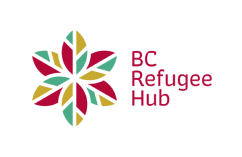Refugees – The Big Picture
UNHCR’s latest Global Trends report shows that 79.5 million people were forcibly displaced at the end of 2019. That’s fully 1 percent of humanity, or 1 in every 97 people on earth. That’s fully 1 percent of humanity, or 1 in every 97 people on earth. The number of displaced people was nearly double the 2010 number of 41 million and an increase from the 2018 number of 70.8 million.
In 1997, 33.9 million people globally were forcibly displaced by war, persecution or violence each year, compared to 65.6 million in 2016 and “it remains at a record.” (United Nations Refugee Agency – UNHCR). Some 11 million people were newly displaced in the course of last year – fleeing wars, violence or persecution. These were individuals who were forced to flee their homes to escape persecution, war or severe human rights abuses. Often, they can never return home and about one third are officially recognized as refugees.
(Source)
Refugees in Canada
Research commissioned in 2019 by UNHCR in Canada shows that refugees are creating jobs for themselves and other Canadians, with almost 1 in 7 refugees self-employed or business owners. Refugees are on average just over 11 years younger than those born in Canada, which means they are more likely to be of working-age, with many years to contribute. Notably, the research proved that 20 years after being resettled to Canada, refugees were contributing more in income tax than they received in public benefits and services.
Quick Facts and Figures:
- 79.5 forcibly displaced worldwide at the end of 2019
- 3 million internally displaced people
- 8 million asylum-seekers
- 2 million under UNHCR’s mandate
Additional Facts:
- 40% are children.
- An estimated 30 – 34 million of the 79.5 million forcibly displaced persons were children below 18 years of age
- 85% are hosted by developing countries.
- Developing countries hosted 85 per cent of the world’s refugees and Venezuelans displaced abroad. The Least Developed Countries provided asylum to 27 per cent of the total
- 68% of refugees are from just 5 countries.
-
- Syrian Arab Republic (6.6 million)
- Venezuela (3.7 million)
- Afghanistan 2.7 million
- South Sudan 2.2 million
- Myanmar 1.1 million
-
-
- 3.6 million people hosted by Turkey.
- Turkey hosted the largest number of refugees worldwide, with 3.6 million people. Colombia was second with 1.8 million, including Venezuelans displaced abroad.
- 2 million new asylum claims.
- The number of new asylum claims remained high at 2.0 million. The United States of America was the world’s largest recipient of new individual applications (301,000), followed by Peru (259,800), Germany (142,500), 85% France (123,900) and Spain (118,300).
- 107,800 refugees for resettlement
- UNHCR submitted 81,600 refugees to States for resettlement. According to government statistics, 26 countries admitted 107,800 refugees for resettlement during the year, with or without UNHCR’s assistance.
- 3.6 million people hosted by Turkey.
(Source)
Who is a refugee?
A refugee is someone who has been forced to flee his or her country because of persecution, war or violence. A refugee has fear of persecution for reasons such as race, religion, nationality, political opinion or membership in a particular social group. Most likely, they cannot return home or are afraid to do so. War and ethnic, tribal and religious violence, sexual orientation and gender violence are leading causes of refugees fleeing their countries.
Refugees must qualify for entry under Canada’s laws and must pass medical and security checks before they can come to Canada.
What types of refugees does Canada recognize?
Refugees arrive under one of four (4) different categories as defined below:
Government-Assisted Refugee (GARs):
Under the GAR Program, refugees are referred to Canada for resettlement by the United Nations Refugee Agency (UNHCR) Individuals cannot apply directly. Individuals must register for refugee status with the UNHCR or state authorities to be considered by a referral organization.
A GAR’s initial resettlement in Canada is entirely supported by the Government of Canada or the province of Quebec. This support is delivered by non-governmental agencies called service provider organizations funded by IRCC, of which ISSofBC is one. GARs receive support for up to one year from the date they arrive in Canada, or until they are able to support themselves, whichever happens first.
(Source)
Privately-Sponsored Refugee (PSR):
If an individual is a PSR, it means that a group of people in Canada have volunteered to help the individual adjust to life here once resettlement has taken place. The sponsorship group will assist the individual with finding a place to live, financial support, social and emotional support and food and clothing. The sponsorship group also agrees to support the PSR for one year after they arrive or until they can support themselves, whichever comes first.
(Source)
Blended Visa Office-Referred (BVOR) Program:
The BVOR Program matches refugees identified for resettlement by the United Nations Refugee Agency (UNHCR) with private sponsors in Canada. Key features of the program are as follows:
- The UNHCR identifies the refugees.
- The Government of Canada provides up to six months of income support.
- Private sponsors are responsible for another six months of financial support. The sponsorship group also gives up to a year of social and emotional support.
- The Interim Federal Health (IFH) Program and provincial health care cover refugees for the length of the sponsorship (one year).
(Source)
Refugee Claimant:
A person in need of protection is a person in Canada who cannot return to their home country safely. This is because if they return, they would be subject to:
- danger or torture
- risk to their life, or
- risk of cruel and unusual treatment or punishment
Canada offers refugee protection to individuals in Canada who fear persecution or who would be in danger if they had to leave. These individuals are generally referred to as Refugee Claimants as they must make a claim for refugee protection to the Immigration and Refugee Board of Canada (IRB) to legally stay in Canada.
How many refugees arrive to Canada?
|
Refugee Category |
Canada |
|
Blended Sponsorship Refugee |
8,670 |
|
Government-Assisted Refugee |
61,335 |
|
Privately Sponsored Refugee |
84,815 |
|
Resettled Refugees |
154,820 |
Stats from January 2015 – June 2020 (Source)
In 2019, 107,800 refugees were resettled to 26 countries with or without UNHCR’s assistance, including 30,100 to Canada. The Canadian government sets an annual target for resettling refugees in the various categories. In 2019, 19,000 arrived through the Private Sponsorship of Refugees Program.
In 2018, Canada resettled the highest number of refugees and had the second-highest rate of refugees who eventually gained citizenship. Canada accepted 28,100 of the 92,400 refugees who were resettled across 25 countries that year. This includes refugees coming in through a number of available channels. Since 1959, Canada has resettled over 700,000 refugees
Canada has three different resettlement programs. Of the resettled refugees that arrived in 2019, 29% were Government Assisted Refugees (GARs), 67% were Privately Sponsored Refugees (PSRs) and 4% arrived with the Blended Visa Office-Referred Program (BVORs).
(Source)
How many refugees arrive to British Columbia?
|
Refugee Category |
British Columbia |
|
Blended Sponsorship Refugee |
1,230 |
|
Government-Assisted Refugee |
6,170 |
|
Privately Sponsored Refugee |
5,505 |
|
Resettled Refugees |
12,900 |
Stats from January 2015 – June 2020 (Source)
In 2017, British Columbia saw a 64% drop in the number of Government Assisted Refugee (GAR) arrivals in comparison to 2016. On the other hand, Settlement Orientation Services (based in Vancouver, B.C.) saw 76% increase in the number of Refugee Claimant arrivals to B.C. in 2017 compared to 2016. In terms of housing, 48% of GARs permanently reside in Surrey, with 17% residing in Burnaby in 2017 while 38% of Refugee Claimants found permanent or temporary housing in Vancouver, with the second top location being Surrey at 18%. Looking ahead, Canada’s Multi-Year Immigration Levels Plan shows an increase in the targeted number of Privately Sponsored Refugee arrivals, approximately exactly double the target in comparison to GARs for each year from 2018 to 2020.
Resettled Refugees by Consensus Metropolitan Area (CMA)
|
Refugee Category |
Vancouver |
Victoria |
Kelowna |
Abbotsford – Mission |
Nanaimo |
|
Blended Sponsorship Refugee |
410 |
145 |
70 |
90 |
40 |
|
Government-Assisted Refugee |
5,355 |
515 |
135 |
80 |
65 |
|
Privately Sponsored Refugee |
4,310 |
425 |
125 |
60 |
105 |
|
Resettled Refugees |
10,075 |
1,085 |
335 |
235 |
210 |
Stats from January 2015 – June 2020 (Source)
(Source)
What support do Government-Assisted Refugees receive?
Government-Assisted Refugees (GARs) are refugees who are selected from abroad and resettled to Canada, arriving as permanent residents. The federal government is responsible for their selection and initial settlement in Canada. For example, GARs are eligible for federal government income support through the Resettlement Assistance Program (RAP) for up to one year after arrival.
Support services include:
- temporary housing,
- help with finding permanent housing,
- help with registering for mandatory federal and provincial programs,
- orientation to the community,
- support for high needs clients, and
- referrals to other refugee and settlement programs.
Canada provides income support under RAP to eligible refugees who cannot pay for their own basic needs. Support can include a:
- one-time household start-up allowance, and
- monthly income support payment.
The level of monthly financial support is generally based on the prevailing provincial social assistance rates in the province where the refugees settle. Financial support can last up to one year after a refugee arrives in Canada, or until they can support themselves, whichever occurs first.
What support do Privately Sponsored Refugees receive?
Sponsoring groups agree to provide the refugees with care, lodging, settlement assistance and support for the duration of the sponsorship period. Normally, this is 12 months starting from the refugee’s arrival in Canada or until the refugee becomes self-sufficient, whichever comes first. In exceptional circumstances, the visa officer may determine that the refugee requires more time to become established in Canada and will ask the sponsoring group to extend the sponsorship period to a maximum of 36 months. The sponsoring group has the option of refusing the request for an extension of the sponsorship period. However, the sponsoring group risks having the case refused as a result.
Private sponsors normally support the sponsored refugees by:
- providing the cost of food, rent and household utilities and other day-to-day living expenses;
- providing clothing, furniture and other household goods;
- locating interpreters;
- selecting a family physician and dentist;
- assisting with applying for provincial health-care coverage;
- enrolling children in school and adults in language training;
- introducing newcomers to people with similar personal interests;
- providing orientation with regard to banking services, transportation, etc.; and
- helping in the search for employment.
Sponsoring groups must reside or have representatives in the community of settlement (i.e. in the community where the sponsored refugees will live). The intent is to have a group of persons helping refugees to get established in the community and not one person acting alone.
(Source)
What support do refugees arriving under the Blended Visa Office-Referred program receive?
The BVOR program is a combination of the GAR and PSR programs with The Government of Canada giving up to six months of income support and the private sponsors give another six months of financial support. They also give up to a year of social and emotional support. For more information on this unique program, click here.

